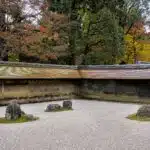Fushimi Inari Taisha is one of Kyoto’s most iconic and visited Shinto shrines, renowned for its thousands of vibrant red torii gates that form a mesmerizing pathway up Mount Inari. Dedicated to Inari, the Shinto god of rice, prosperity, and business, the shrine is a significant cultural and spiritual site that dates back to the 8th century.
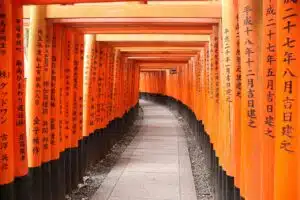
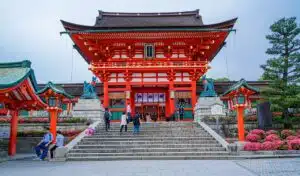
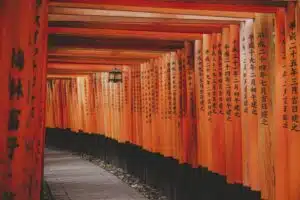
What to See at Fushimi Inari Taisha
- Senbon Torii (Thousand Torii Gates): The most famous feature of Fushimi Inari, these bright red gates create a tunnel-like path that winds up the mountain. Each gate is donated by individuals or businesses, symbolizing good fortune and prosperity.
- Main Shrine (Honden): Located at the base of the mountain, the main shrine is where worshippers pray and make offerings. It’s a great place to learn about Shinto practices and traditions.
- Sub-Shrines: As you hike up the mountain, you’ll encounter numerous smaller shrines and statues, many dedicated to foxes (kitsune), which are considered messengers of Inari. These shrines offer a quieter, more intimate experience away from the crowds.
- Yotsutsuji Intersection: About halfway up the mountain, this point offers a rest area with panoramic views of Kyoto. It’s a great spot to pause and take in the scenery before continuing the hike.
- Mountain Trails: The full trail to the summit takes about 2-3 hours round-trip. Along the way, you’ll find smaller shrines, stone lanterns, and beautiful forested path.
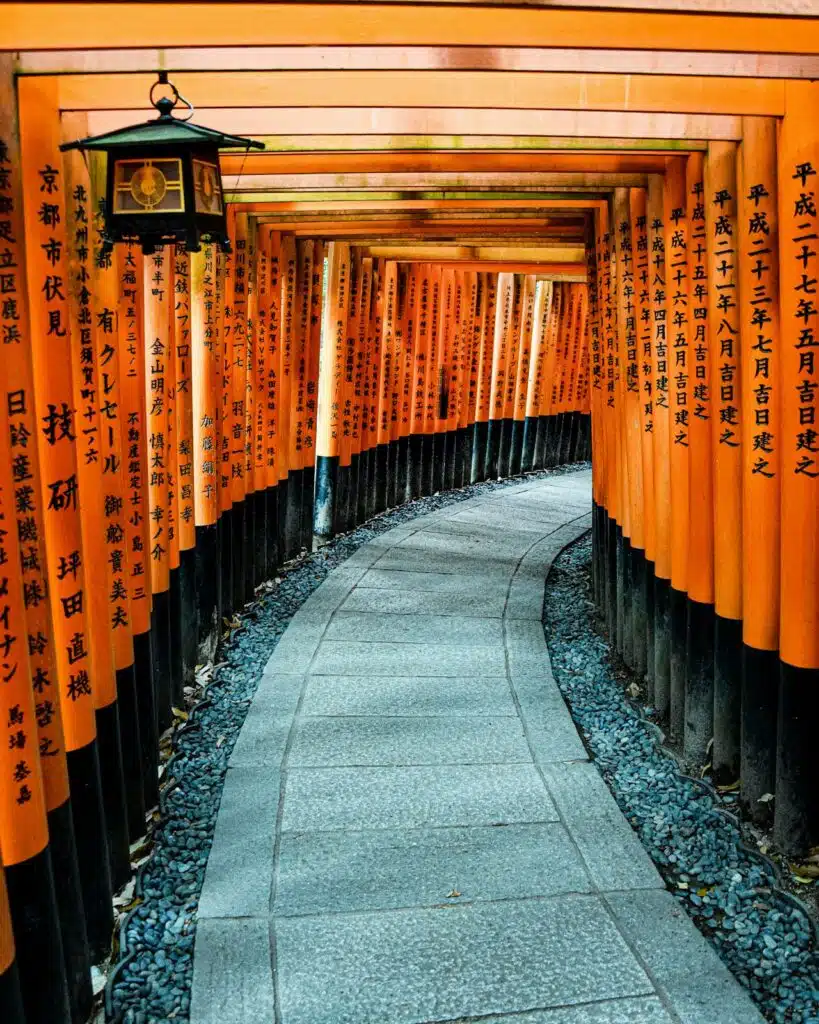
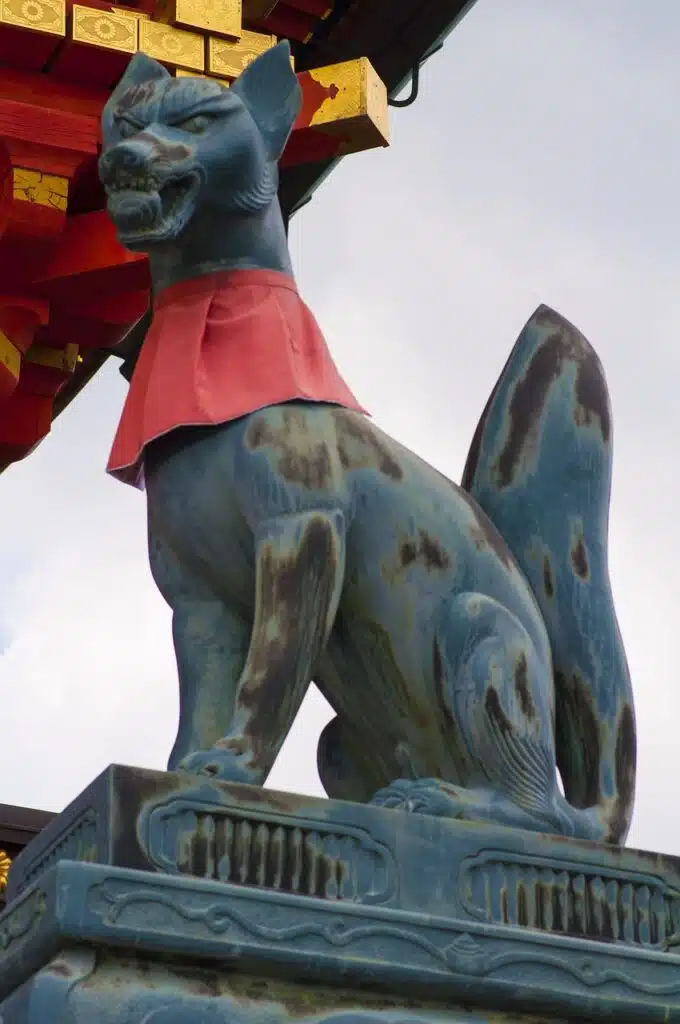
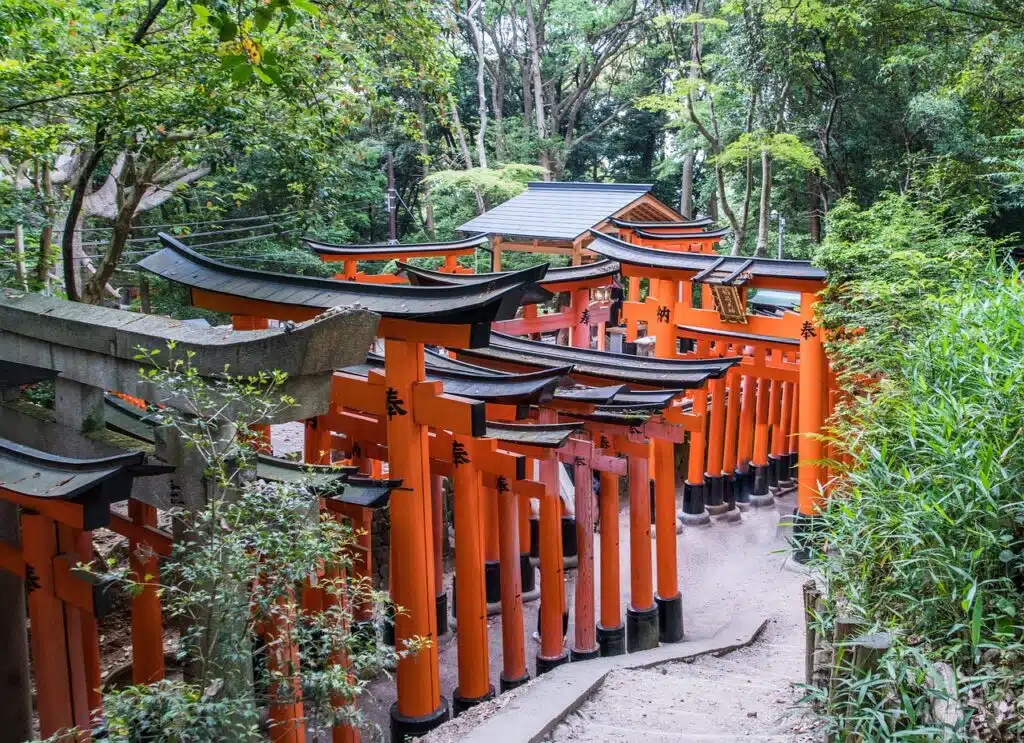
Tips for Visiting Fushimi Inari Taisha
- Best Time to Visit: Early morning or late afternoon is ideal to avoid the crowds and enjoy a more peaceful experience. Visiting at dawn offers the added bonus of seeing the torii gates bathed in soft, natural light.
- Wear Comfortable Shoes: The hike up Mount Inari involves a lot of walking, including some steep and uneven paths. Comfortable shoes are essential for the journey.
- Stay Hydrated: Bring water, especially if you plan to hike to the summit. While there are vending machines and small shops along the way, it’s good to have your own supply.
- Take Your Time: The entire shrine and mountain trail can take several hours to explore fully. Don’t rush; take breaks and enjoy the serene surroundings.
- Photography: The torii gates make for stunning photographs, but be mindful of other visitors when stopping to take pictures. Early mornings offer the best light and fewer people.
- Explore Beyond the Main Path: While the main torii gate path is the most popular, don’t hesitate to explore the side trails and smaller shrines for a more personal and tranquil experience.
- Respect Shrine Etiquette: As with all religious sites, be respectful. Bow slightly before entering the torii gates, refrain from loud conversations, and follow any posted guidelines.
- Accessibility: The main shrine area is accessible, but the mountain trails can be challenging for those with mobility issues. Consider enjoying the lower shrine areas if the hike is too strenuous.
- Fox Statues: Notice the fox statues holding different objects in their mouths, each symbolizing a different aspect of prosperity, such as rice (abundance) and keys (to rice granaries).
Getting There
Fushimi Inari Taisha is conveniently located near Inari Station on the JR Nara Line, just a 5-minute train ride from Kyoto Station. It’s also accessible from Fushimi-Inari Station on the Keihan Main Line.
Why Visit Fushimi Inari Taisha?
Fushimi Inari Taisha offers a unique and unforgettable experience with its striking torii gates, spiritual atmosphere, and beautiful mountain trails. It’s a must-visit for those seeking to immerse themselves in Kyoto’s rich cultural heritage and enjoy one of Japan’s most iconic landscapes.








